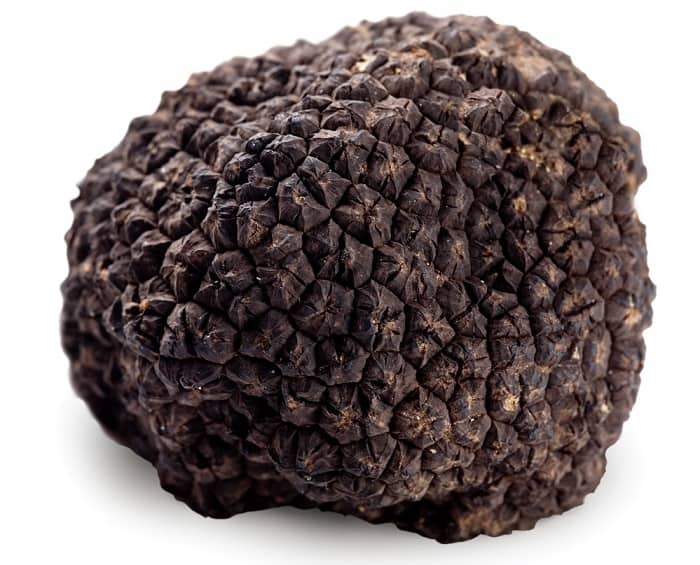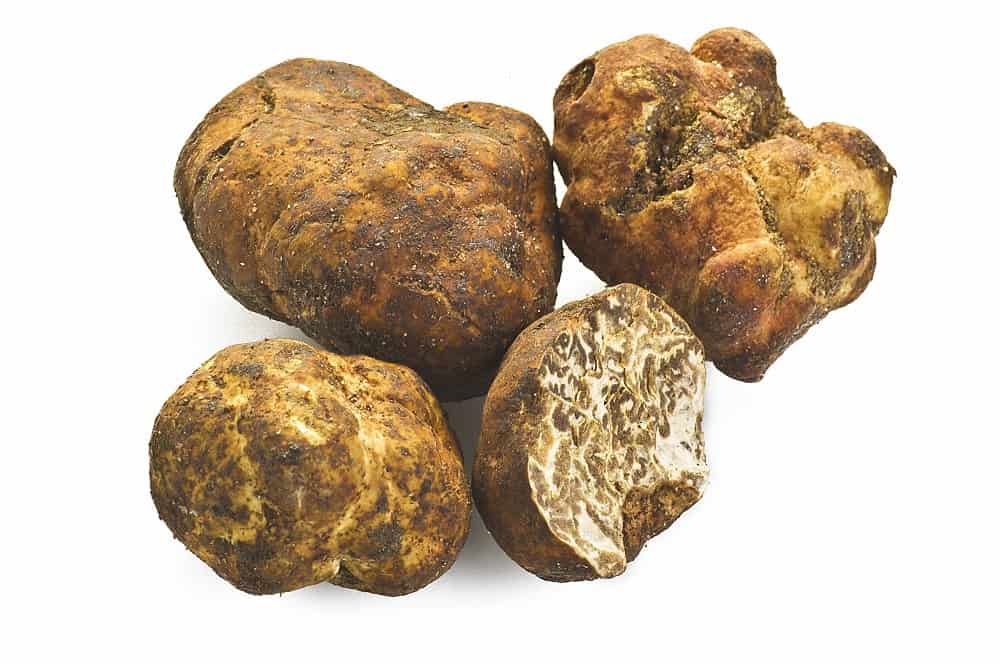Truffles are beloved ingredients that can be commonly found in high-end restaurants and expensive cuisine. Due to the rarity and the nature of this type of mushroom, truffles are popularly known to be quite costly. With such a high demand for truffles, large varieties of this mushroom can fetch tens of thousands of euros in the right market. Being a mushroom, they are completely different from both plants and animals. However, there are still some vegans that would voice concern regarding this ingredient.
Truffles are unique compared to other mushrooms in that they are not farmed. In fact, they have to be collected in the wild. These species of mushrooms live underground in close proximity to trees which makes hunting them especially difficult.
The current methods of finding this delicacy include the help of certain animals that are able to sniff them out such as pigs and dogs. The use of animals for truffle hunting makes truffles an ethical dilemma for vegans. As a mushroom, truffles are technically dietarily vegan. However, the use of animals for sourcing truffles is not in accordance with ethical vegans.
Table of Contents
What are Truffles?

Like most mushrooms one can visibly find in the wild and in the kitchen, truffles are made from the fruiting body of fungi (1). Fungi primarily exist as a network of filaments (hyphae) under the earth called mycelium. During periods of excess energy and nutrients, these mycelia can then begin producing fruiting bodies that primarily aim to reproduce through sporulation. This is why although most of the body of the fungus is underneath the soil, fruiting bodies such as mushrooms exist above the soil.
However, truffles are unique compared to most mushrooms in the sense that it produces subterranean fruiting bodies which means they produce fruiting bodies that do not grow above the soil. This is a primary reason why truffle cultivation is so hard because the entire fungi, both mycelium and fruiting body, exist underneath the soil and away from visibility.
Truffles are considered to be ectomycorrhizal which means that they are types of fungi that form symbiotic relationships with plants and their root systems. Specifically, these truffles form systematic relationships outside of the roots. In contrast, endomycorrhizal fungi are able to form similar relationships while colonizing the internal tissues of root systems around them. Due to this nature of truffles, they are typically found around the base of certain trees.
Different Kinds of Truffles
There are a wide variety of fungi that are colloquially called truffles. Taxonomically, mushrooms that are typically called truffles are composed of a variety of fungal species and general that are under both families Tuberaceae and Pezizaceae. Culinarily speaking, the different types of truffles can include the Australian truffle, black summer truffle, Brumale truffle, Burgundy truffle, Chinese black truffle, Perigord truffle, Tuscan truffle, White Piedmont truffle, and so on. However, the most common way to categorize truffles is to simply divide them between black truffles and white truffles.
There are distinct differences between white and black truffles. For one, they look very different compared to one another. White truffles are characterized by being smooth with perhaps a slight yellow tinge while black truffles are described as having rough and rigid exteriors, not unlike the bark of a tree.
Black and white truffles are also distinct in their geographic distribution and seasonality. White truffles are said to remain constrained to Piedmont and Tuscany in Italy as well as certain areas in southern France and Croatia. On the other hand, more success has been found with distributing black truffles. Originally from Perigord, France, black truffles can now be found in various areas in Europe, Australia, and northern California.
Seasonally, white truffles are often collected from September to December with peak periods between October and November. On the other hand, black truffles are collected from December to February. There are other species of black truffles that can be further collected during the summer.
Due to all the factors listed above, it comes as no surprise that white truffles are significantly more expensive than black truffles. For example, Chinese black truffles can be bought for an average of around $38 per pound while Italian white truffles would go for around $210 for the same amount (2).
Are Truffles Vegan?

As mushrooms, truffles should be perfectly fine for dietary vegans. Mushrooms are part of kingdom Fungi which means they are completely different from both plants and animals which are respectively under kingdoms Plantae and Animalia. Although the sedentary lifestyle of mushrooms has caused them to be mistaken as plants before, fungi such as truffles are actually phylogenetically closer to animals than they are to plants.
There are arguments stating that mushrooms and fungi are close enough to animals to reconsider if whether they are vegan. Specifically, truffles have been found to produce endocannabinoids – a type of signaling molecules that animals also produce. However, this argument does not hold up very much especially since all forms of life have some overlapping molecules used in various cellular processes.
Despite truffles being perfectly devoid of animal products, some vegans avoid truffles because the practice of hunting truffles still requires animals. There are two factors that play critical roles in truffle collection. Firstly, truffles grow their fruiting bodies under the soil which makes them difficult to find. Secondly, there is a right time to collect them when they are ripe as collecting them too soon or too late would render them inedible.
As a way to correctly collect truffles, people use animals that have sensitive senses of smell that are able to pick up the distinct aromas of these truffles. In previous years, the standard animal used for truffle hunting was pigs. However, modern truffle hunting has leaned more towards dogs. The problem with using pigs is that although they are sensitive to the smell, they can accidentally eat the truffles if the handler arrives at the location too late. On the other hand, there is little worry that dogs will damage the truffles.
Due to the use of animals in the collection of truffles, the mushroom inevitably involves an animal. Thus, many ethical vegans believe that truffles are not vegan for that very reason.
Truffles as Food
Truffles are rare ingredients which means they are not very common in cuisine. Due to their rarity and distinct flavor profiles, they are usually delegated as primarily flavoring agents or slight garnishes on certain dishes.
Black and white truffles are also used quite differently from one another. For example, since white truffles are more pungent in both smell and taste, they are usually used in very small amounts, typically shaved raw on top of certain dishes.
On the other hand, there are so many varieties of black truffles that can be used more flexibly compared to white truffles. The flavor of black truffles is more subtle than that of white truffles which is why cooking them can help bring out more of the flavor.
There are no dishes that specifically call for truffles as the ingredient is often used to elevate traditional dishes. For example, one can simply add truffles to a wide variety of dishes such as pasta, risotto, bruschetta, and many more.
How About Truffle Oil?
Since truffle is commonly understood to be a luxury item and a difficult item to acquire, an effective alternative used in culinary is truffle oil – these are oils infused with the aroma and residues of truffles. Similar to how truffles are used in the kitchen, truffle oil is typically used as a finishing oil like a condiment that is added after much of the dish has already been prepared.
Since truffle oil is essentially made using oil and truffles, then truffle oil should fall under the same issue as truffles. However, that is simply not the case. In fact, truffle oils are actually controversial in the sense that most truffle oils in the market apparently do not contain real truffles (3).
While traditional truffle oil can infuse the necessary aromatic compounds from real truffles into various oils (i.e., typically olive oil but other oils such as grapeseed and canola oil are used as well). However, modern truffle oils have been found to be mostly synthetic as the oils are simply added with synthetic versions of the similar compounds found in truffles such as 2,4-dithiapentane.
Since synthetic truffle oils are simply added with some compounds found in truffles, they lack the true complexity of the flavors found in real truffles. While this is good news for vegans who enjoy the flavor of truffles in a completely vegan manner, many famous chefs and food personalities have come forward and expressed their disdain towards truffle oil. Chef Daniel Patterson, who wrote an opinion piece on the matter in the New York Times, said that their “one-dimensional flavor is also changing common understanding of how a truffle should taste.”
References




